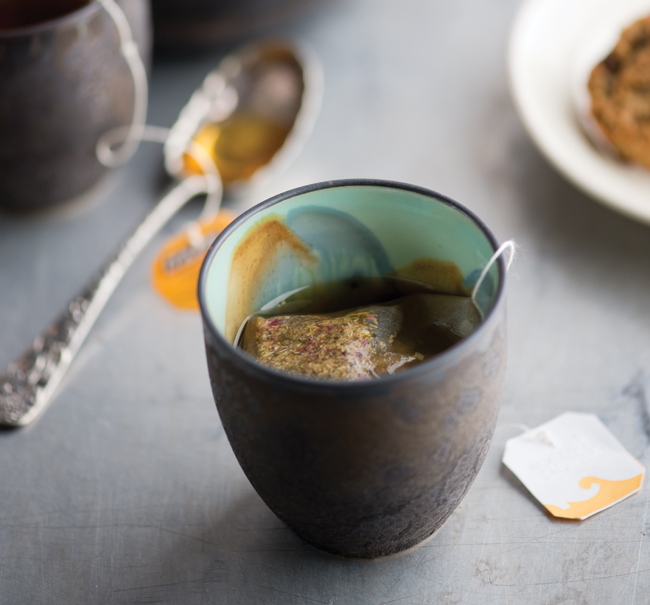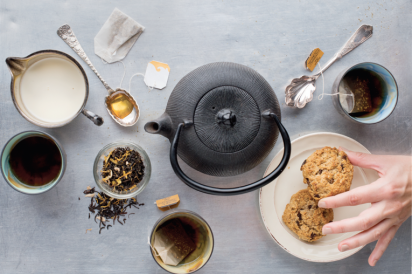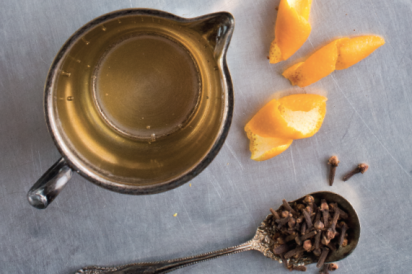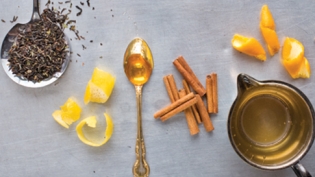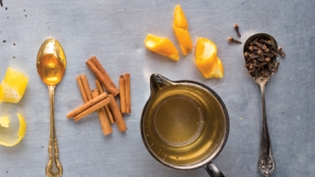Steeped in Knowledge: Exploring Tea’s History
“If you are cold, tea will warm you; if you are too heated, it will cool you; if you are depressed, it will cheer you; if you are excited, it will calm you.”
Those words, written by British statesman William Ewart Gladstone in the 1800s, sum up the multifaceted healing and heartwarming qualities that a mug of tea can bring to the sipper.
There have been countless quotes throughout the course of history that encapsulate those same sentiments — and understandably so. Tea is an ancient beverage that has been used for thousands of years to heal the body, mind, and soul, while bringing together diverse cultures around the world. Next to water, tea is the world’s most consumed beverage. And, whether it is a mug of black tea with milk or a steeped pot of oolong that you fancy, it all boils down to creating the perfect cup of comfort.
All true varieties of tea come from the Camellia sinensis plant, which grows at high altitudes in subtropical climates. For superior quality tea, the top two leaves and bud are picked by hand and then processed accordingly, depending on the type of tea — black, green, oolong, white, or pu-erh. The steps that take place during the processes of oxidation and fermentation are what make the flavors of these teas so different and unique. Although herbal and rooibos teas possess many of the same qualities as the teas rooted from the Camellia sinensis plant, they are not considered true teas because they originate from a variety of other plants.
According to The Tea Association of The USA, the estimated wholesale of the United States’ tea industry grew from $1.84 billion in 1990 to $8.20 billion in 2011. In 1904, New York merchant and tea importer Thomas Sullivan first introduced bagged tea (whether purposefully or by chance) when he began sending samples of his tea to customers in small silk bags. Some of these customers believed that the bags were supposed to be used in the same way as infusers, and soaked the entire bag of tea in a pot of hot water. In 1952, Thomas Lipton patented the four-sided Flo-Thru Tea Bag that’s so ubiquitous today. Of course, tea bags are convenient, but loose leaf varieties, available at tea shops around the region, including Prestogeorge Coffee & Tea, Dobrá Tea, Gryphon’s Tea, Té Café, and Healcrest Urban Farm, offer a more tactile and intimate experience for the drinker.
The culture of tea drinking can range from the traditional Japanese tea ceremony and British high tea, to a quick cup at a local coffeehouse, and all of these customs reflect a strong appreciation for what tea has to offer to our society — comfort and calm, caffeine and community. The Western traditions of high tea are centered on bringing people together in a social setting, and Eastern traditions of tea ceremonies are centered on the practices of meditation and the knowledge of tea itself. Tea customs will always vary among us, but are all centered on the ideas of enjoying the present moment, connecting with others, and absorbing the healthy effects within an assortment of strains. By combining our melting pot of cultures, the U.S. has created a tea tradition that is different than any other country in the world. Locally, one of the ways tea enthusiasts can gather is through Pittsburgh’s Tea Club, a meet-up group organized by Margaret Harris, owner of Margaret’s Fine Imports in Squirrel Hill.
Tea’s medicinal benefits are wide-ranging, due to its varieties. It is a digestion aid, a metabolism booster, and an anti-cancer agent. It helps encourage circulation, can lower blood pressure and bad cholesterol, and reduce the risk of stroke. Tea is filled with antioxidants, phytochemicals, flavonoids, flavonols, and the amino acid theanine, which increases serotonin levels in the brain. Beyond its positive health qualities, steeped tea leaves make a valuable contribution to compost. Use a chilled, herbal tea bag to soothe sunburn, razor burn, or puffy eyes. Steeped tea, such as green, can serve as a calming rinse for acne-prone skin.
And, when it comes to cooking, the possibilities are endless. The tannins in tea work wonders as a meat tenderizer in marinades. Dry the leaves, grind or chop them, and use just as you would herbs. Add to soup broths, or cold-infuse into alcohol, for example, vodka, says Gryphon Saladin, owner of Gryphon’s Tea, which is based in Lawrenceville and also has a booth at Pittsburgh Public Market. We’ve gathered a few delicious tea-based recipes from Gryphon’s Tea to try! See page 44.
To maintain the multifold flavors and benefits of your tea, be sure to store the leaves or bags in a dark, cool, dry area. Just like coffee, tea has a shelf life, losing its flavor and becoming stale as it ages. “What you’re trying to prevent is the light interacting with the tea and creating oxidation. Different teas will keep a different length of time,” says Saladin. Green and white teas will keep six months to a year; black teas, two years; rooibos, two years plus. Pu-erh teas are the exception as they improve in quality as they age, he says, because of the active, probiotic cultures that live in the leaves. (Did you know? This deeply flavored, earthy tea was discovered in 1000 A.D.)
The mystery of tea’s allure? Certainly it’s a combination of factors, including “the flavor, the antioxidants, and the balance of caffeine to the calming element,” says Saladin.
Not just that, but tea takes time to drink, making us slow down and inviting us to share a cup and some conversation.
“Tea does our fancy aid/Repress those vapors which the head invade/And keeps that palace of the soul serene.” — Edmund Waller, English poet
“Tea is drunk to forget the din of the world.” — T’ien Yiheng, Chinese philosopher


